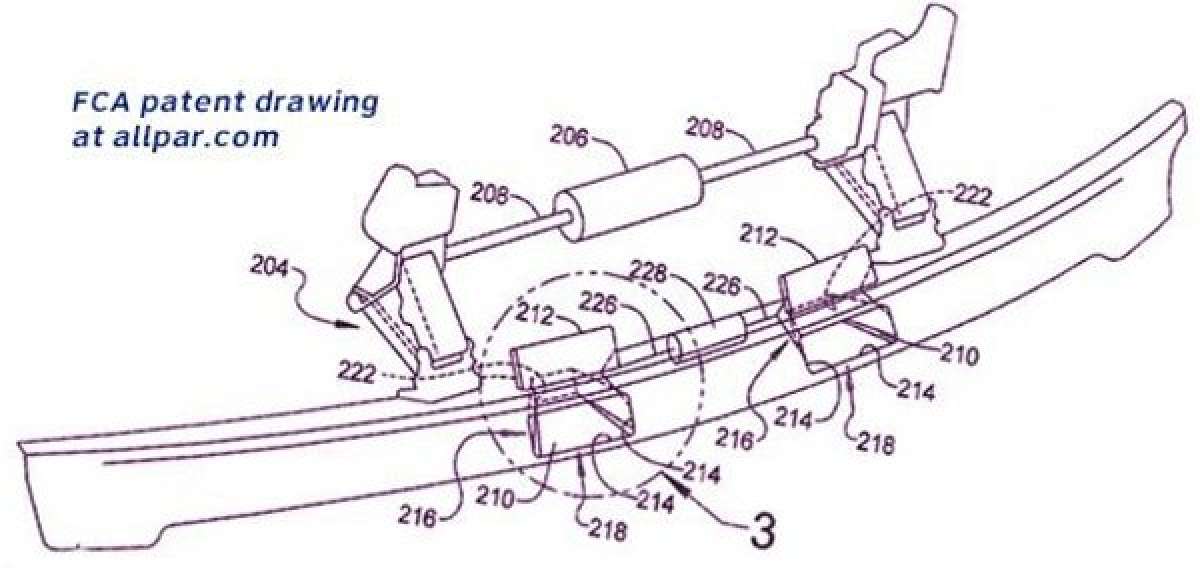One of the key advantages of the Hellcat-powered Dodge Challenger and Charger over the Chevrolet Corvette Z06 is that the supercharged Hemi doesn’t have the same cooling issues as the supercharger GM LT4. Chrysler was able to design a cooling system for the supercharger Hemi that allows it to make all 707 horsepower for long periods of time, including hours of track testing of which I was a part. On the other hand, the Corvette Z06 has a safety measure that cuts down the power when the engine reaches higher engine temperatures, allowing the heavier Hellcat Challenger to outrun the Vette in hot temperatures.
The “problem” with a Hellcat-powered Jeep Grand Cherokee Trackhawk is that in working to improve the aerodynamic properties of the big SUV to make the most of all of that power, cooling could become an issue. After all, the same cooling air that enters the engine bay to keep power levels high also causes wind resistance, so with the big Jeep, the Chrysler engineers have a tough task of balancing aerodynamics and cooling air flow. An active aerodynamics system like the one pictured above could go a very long way in solving that problem, allowing the Jeep to have improved aero properties during high performance driving – while still letting enough air into the engine bay to both feed and cool the most powerful American production road engine ever.
The Active Aero System Detailed
The active aero system shown in the Allpar image above includes two different active components – including an air dam and a set of flaps within the air dam, presumably to provide cooling air when the air dam is in its extended position. This system would afford the vehicle sporting this piece improved aerodynamics with the large air dam, while the smaller flaps in the middle of the piece would allow air to continue to flow into the engine bay. The flap would likely deploy at high speeds, improving the aero properties as the air in channeled up over the vehicle instead of entering the engine bay. When the engine computer detects the need for more cooling air, the system can open the smaller flaps, which would slightly decrease aero properties, but the increased cooling air flow would keep which engine is mounted behind this air dam to make peak power for longer periods of time.
Where Will This System be Used?
When the folks at Allpar found this patent information on an active aerodynamics system, it was displayed as a component for the Ram truck lineup. A system like this would most certainly improve aero properties when cruising on the open road, allowing the most fuel friendly truck in America to get even better MPGs.
However, Allpar points out that this system could make an even bigger impact on a high performance Jeep, especially one with increased engine cooling and aerodynamic needs. When a Hellcat Jeep driver puts the hammer to the floor and the speed rises up over the 100mph mark, the air dam could extend, improving the amount of downforce on the vehicle and cutting down on the amount of turbulent air rushing into the engine bay. With this decrease air flow, the supercharged Hellcat Hemi could get a little hot, at which point the secondary flaps would open. Those secondary flaps would decrease downforce, but it could do so in short stints, only opening long enough to get the engine to comfortable operating temperatures and slamming shut to yield better aerodynamic flow when the computer deems it to be safe.
Unfortunately, this is all just speculation on a vehicle that doesn’t technically exist, but with the need for major downforce at high speeds coupled with the demand for plenty of cool air around the engine – this system could be the next step towards the Jeep Trackhawk becoming a production reality.
Image Source: Allpar





